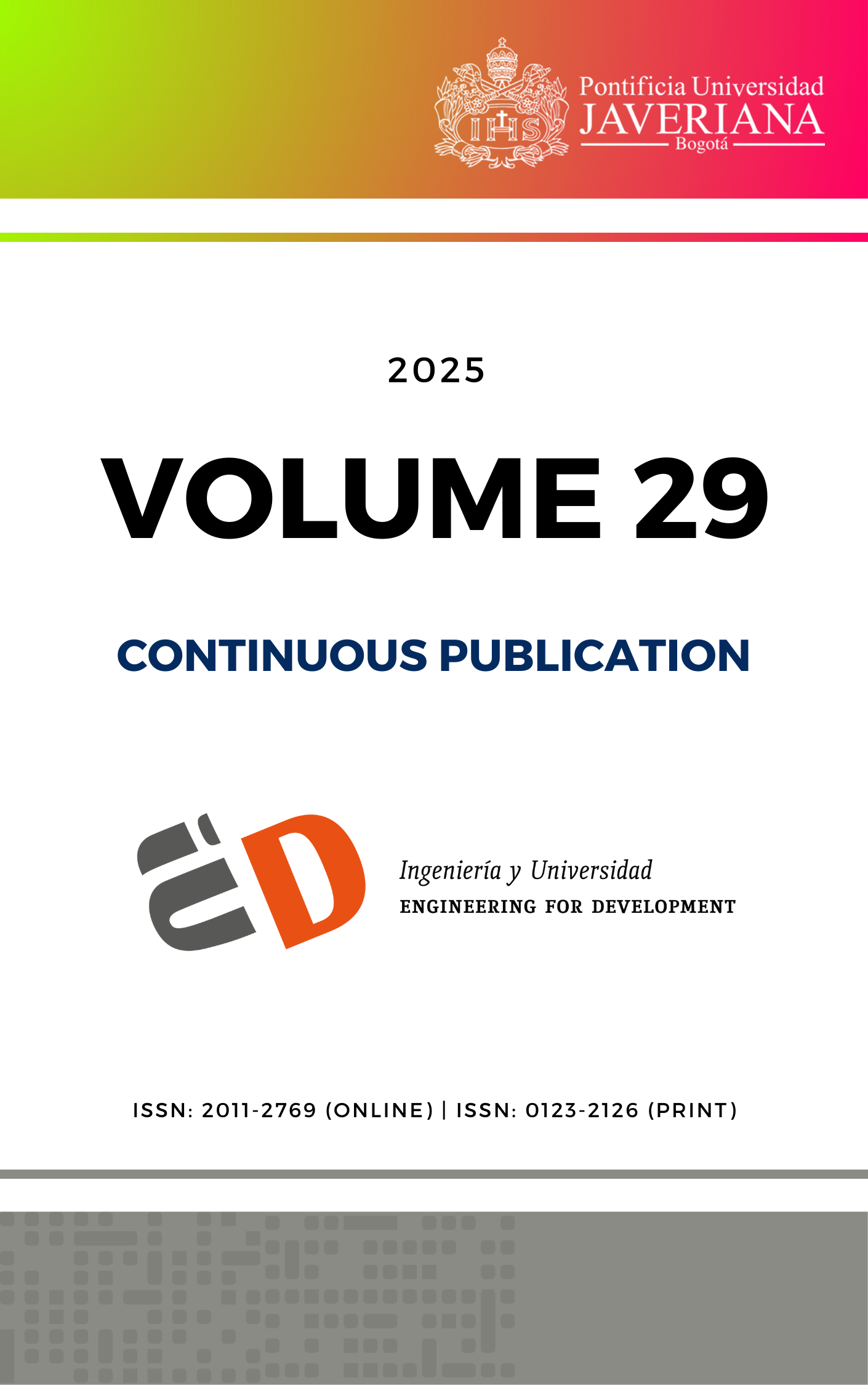Abstract
The purpose of the research was to generate a teaching-learning proposal through the design of a didactic sequence, which strengthened the geometric-mathematical knowledge of the elements of a Simple Circular Curve for the design and study of roads, using an Applet programmed in GeoGebra. This tool allowed us to calculate the elements, coordinates of the PI, PC, PT, abscissa, direction of the curves according to their deflection angle and their graph quickly presenting it on a grid with their respective coordinates. A mixed methodology was applied, which involved the planning, implementation and evaluation of the topic in a subject of Road Surveying I. After developing the Applets for Horizontal Alignment and the Simple Circular Curve, the sixteen students participated in a cooperative class where they interacted with the Applets to solve a previously solved exercise. The development of the proposal had a positive impact, because the technology students and engineers in training used the Applets to graphically and analytically model a Simple One-Way Circular Curve, contributing to the learning of the topic.
[1] E. Sáenz, M. Patiño y J. Robles, «Desarrollo de las competencias matemáticas en el pensamiento geométrico, a través del método heurístico de Pólya», Panorama, vol. 11, nº 21, pp. 53–67, 2017.
[2] C. Álvarez-Melgarejo, J. Cordero-Torres, J. González-Bareño y O. Sepúlveda-Delgado, «Software GeoGebra como herramienta en enseñanza y aprendizaje de la Geometría», Educación y Ciencia, vol. 22, pp. 387-402, 2019.
[3] J. W. Patiño Delgado, Estrategia pedagógica mediada por GeoGebra para el aprendizaje del pensamiento geométrico, Barranquilla : Universidad de la Costa CUC, 2021.
[4] P. Suárez, A. Salamanca y A. Jaime, «Estrategias Mediadas por TIC para Desarrollar el Pensamiento Espacial y los Sistemas Geométricos», Voces y Realidades Educativas, vol. 1, nº 1, pp. 99-114, 2018.
[5] M. J. Cuetos Revuelta, L. Grijalbo Fernández, E. Argüeso Vaca, V. Escamilla Gómez y R. Ballesteros Gómez, «Potencialidades de las TIC y su papel fomentando la creatividad: percepciones del profesorado», Revista Iberoamericana de la Educación Digital, vol. 23, nº 2, pp. 287–306, 2020.
[6] M. Macías Rojas, E. O. Caro y F. H. Fernández Morales, «Las mediaciones TIC en la resolución de problemas matemáticos, un abordaje documental», Revista Gestión y Desarrollo Libre, vol. 7, nº 14, pp. 1-23, 2022.
[7] A. Grisales, «Uso de recursos TIC en la enseñanza de las matemáticas: retos y perspectivas», Entramado, vol. 14, nº 2, pp. 198-214, 2018.
[8] J. Padilla-Beltrán, P. Vega-Rojas y D. Rincón-Caballero, «Tendencias y dificultades para el uso de las TIC en educación superior», Entramado, vol. 10, nº 1, pp. 3938–3944, 2014.
[9] L. Quiroga, O. Vanegas y S. Jaramillo, «Ventajas y desventajas de las tic en la educación “Desde la primera infancia hasta la educación superior”», Revista de Educación y Pensamiento, vol. 26, pp. 77–85, 2019.
[10] C. H. Chivai, A. A. Soares and P. Catarino, «Application of GeoGebra in the Teaching of Descriptive Geometry: Sections of Solids,» Mathematics, vol. 10, nº 3034, pp. 1-15, 2022.
[11] L. Stenhouse, Investigación y desarrollo del currículum, Madrid: Ediciones Morata S. A., 1984.
[12] R. Hernández Sampieri, C. Fernández Collado y M. D. P. Baptista Lucio, Metodología de la Investigación, sexta ed., México, D.F.: McGraw Hill, 2014.
[13] Instituto Nacional de Vías, Manual de Diseño Geométrico de Carreteras, Bogotá: INVIAS, 2008.
[14] P. Wolf y C. Ghilani, Topografía, decimocuarta ed., México, D.F.: Alfaomega, 2018.
[15] J. Cárdenas, Diseño geométrico de vías, tercera ed., Bogotá: Ecoe Ediciones, 2020.

This work is licensed under a Creative Commons Attribution 4.0 International License.
Copyright (c) 2025 Olga Godoy, Joan Sebastian Blanco RIncon, Maximiliano Garzón Vargas, Julio Hernan Bonilla Romero



